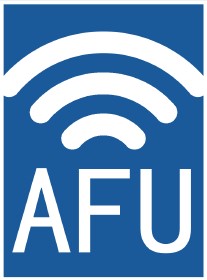The Baseband Unit (BBU): The Computational Heart of the Cellular Network
While towering cell sites and sleek smartphones are the most visible parts of a mobile network, the true intelligence and power reside in a critical piece of infrastructure often hidden from view: the Baseband Unit (BBU). Acting as the brain of a radio base station, the BBU is responsible for the complex digital signal processing that makes wireless communication possible. This article explores the inner workings, types, and evolving architecture of the BBU.
What is a Baseband Unit (BBU)?
A Baseband Unit (BBU) is a fundamental hardware component in a cellular network's Radio Access Network (RAN). Its primary role is to process the baseband signal, which is the original frequency of a data transmission before it is converted to radio frequency (RF) for transmission over the air.
In a typical split-architecture base station, the BBU works in tandem with a Remote Radio Head (RRH) or a Radio Unit (RU). The RRH/RU, installed near the antenna at the top of the cell tower, handles the analog RF functions. The BBU is usually housed in a weather-proof shelter or cabinet at the base of the tower, managing the digital processing and connecting to the core network. They are linked by a high-speed fiber optic cable, which carries the digitized radio signal.
Core工作原理 (Working Principle): How a BBU Operates
The BBU performs a symphony of digital signal processing (DSP) tasks, which can be broken down into two main directions: Downlink (transmit) and Uplink (receive).
1. Downlink (Transmit Path) Processing:
Data Reception: The BBU receives user data and control information in digital form from the network core via the backhaul connection (e.g., fiber).
Digital Signal Processing (DSP): This is the BBU's core function. It performs a series of complex operations on the digital data stream:
Source & Channel Coding: Adds redundancy and error correction codes (e.g., Turbo codes for 4G, LDPC for 5G) to protect the data from errors during its wireless journey.
Modulation: Maps the digital bits onto a complex waveform (e.g., QPSK, 16-QAM, 64-QAM). Higher-order modulation (like 256-QAM) allows more bits to be sent per symbol, increasing speed.
Beamforming Precoding (Advanced): In Massive MIMO systems, the BBU calculates the precise signal adjustments for each antenna element to focus energy directly towards specific users, improving signal strength and reducing interference.
Conversion & Transport: The processed digital signal is then packaged and sent over a fiber optic link using a specialized protocol (Common Public Radio Interface - CPRI, or its enhanced version, eCPRI) to the RRH.
The RRH then converts this digital signal to analog, upconverts it to the desired high-frequency radio wave, amplifies it, and transmits it via the antenna.
2. Uplink (Receive Path) Processing:
The BBU reverses the process for signals received from users' devices:
The RRH receives the analog RF signal, converts it to digital, and sends it down the fiber to the BBU.
The BBU performs digital signal processing to recover the original data:
Demodulation: Interprets the received waveform to extract the transmitted symbols.
Decoding: Uses the error correction codes to identify and fix any errors that occurred during transmission.
The clean, retrieved digital data is then forwarded to the core network.
Types and Architectural Evolution of BBUs
The deployment and functionality of BBUs have evolved to meet the demands for greater efficiency and performance.
1. Traditional Integrated BTS: In early networks, the baseband and radio functions were combined into a single standalone Base Transceiver Station (BTS) cabinet.
2. Distributed RAN (D-RAN) - BBU + RRH: This has been the standard model for 4G. Separating the radio (RRH) from the baseband processing (BBU) allowed for more flexible and efficient site deployment. Multiple RRHs can be connected to a single BBU.
3. Centralized RAN (C-RAN) - BBU Hotel/Pooling: This architecture centralizes multiple BBUs from several cell sites into a single, centralized data center location, often called a "BBU Hotel."
Benefits: Significant savings on site real estate and power, easier maintenance, and enables advanced coordination techniques like CoMP (Coordinated Multi-Point) to combat interference between cell sites.
4. Virtualized BBU (vBBU) and Cloud RAN: This is the direction for 5G and beyond. In this model, the BBU's software functions are decoupled from proprietary hardware and run as Virtualized Network Functions (VNFs) on generic, commercial off-the-shelf (COTS) servers in a cloud environment.
Benefits: Unprecedented flexibility, scalability, and agility. Network capacity can be allocated dynamically with software, and new features can be deployed rapidly across the network without hardware upgrades.
The BBU in the 5G Era: Functional Split into CU and DU
5G's diverse requirements (high bandwidth, low latency, massive connectivity) led to a redefinition of the traditional BBU. Its functions have been disaggregated into two logical entities:
Distributed Unit (DU): Handles real-time, latency-critical layer 1 (PHY) and layer 2 (MAC, RLC) functions. The DU is located closer to the radio site.
Central Unit (CU): Handles less time-sensitive, higher-layer protocols (e.g., RRC, PDCP). The CU can be centralized further into the network, enabling more efficient resource pooling.
This CU/DU split architecture provides operators with immense flexibility to deploy network resources optimally for different 5G use cases (e.g., enhanced mobile broadband vs. ultra-reliable low-latency communication).
Conclusion
The Baseband Unit has evolved from a simple integrated component to the sophisticated, flexible, and virtualized core of modern cellular networks. Its journey from a standalone box to a cloud-native software function underscores the ongoing transformation in telecommunications. As the foundational processor of the RAN, the BBU—and its 5G descendants, the DU and CU—will continue to be the indispensable engine powering our connected world.

